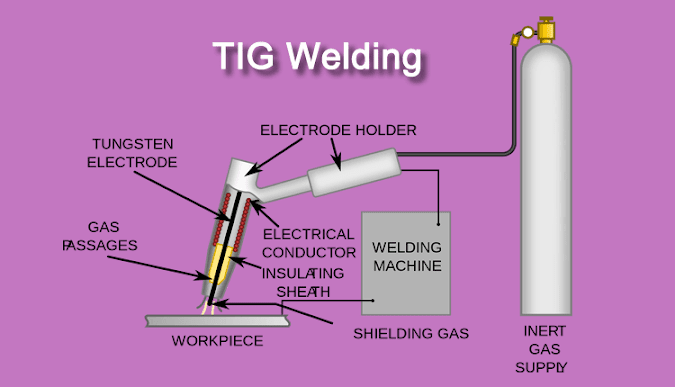TIG Welding Applications Advantages and Disadvantages
Application of TIG welding
TIG welding is a versatile process that can be used in a variety of industries and applications.
- The TIG process used to join a wide range of metal. It can weld reactive metals like aluminium, magnesium, copper, nickel, titanium, etc. and their alloys.
- TIG can be used to weld in any position flat, horizontal, vertical, overhead position. TIG welding enables a wider range of joint designs in comparison to conventional shielded arc welding or stick electrode welding.
- Precision welding: TIG welding is a precise process that is well-suited for welding thin sheets of metal and creating high-quality, attractive welds.
- TIG welding is suitable for combining dissimilar metals, hard facing, and the surfacing of metals.
- It used where quality is critical. Eg. Pipes, vessels, medical equipment aerospace industry.
- Art and design: TIG welding is used in art and design to create sculptures and other decorative items.
Advantages of TIG welding
- Non-consumable electrodes - It helps to provide flawless joints because it is not needed to stop for replacing the electrode as in consumable electrode welding. That also contributes to reducing downtime in production.
- No flux is required because inert gas shields molten metal. So no slag and slag inclusion problems.
- High quality and strong welding achieved by TIG.
- Cleaner and more appealing joints. Sometimes they don’t need finishing process.
- They are suitable for welding of very thin sections.
- The versatility of method. They can work with and without filler metal.
- A wide range of metal can be welded. Nonferrous metals like aluminium, copper and dissimilar metal can be welded without any challenge.
- Non-corrosive and ductile joints.
- The minimum amount of flames and spark. Less distortion due to small heat zone.
- Compared to welds produced through ordinary shield arc welding, TIG welds possess greater strength, ductility, and resistance to corrosion.
- It can be done in both automatic and manual.
Disadvantage of TIG welding
- TIG is a time-consuming process - They are slower than any other welding process. Lower filler deposition rate.
- More complicated - Highly skilled and professional workers are needed to perform TIG welding.
- Safety issue - Welders, are exposed to high intensity of light which can cause eye damage.
- High initial cost.
- It cannot use in thicker sheets of metal.


